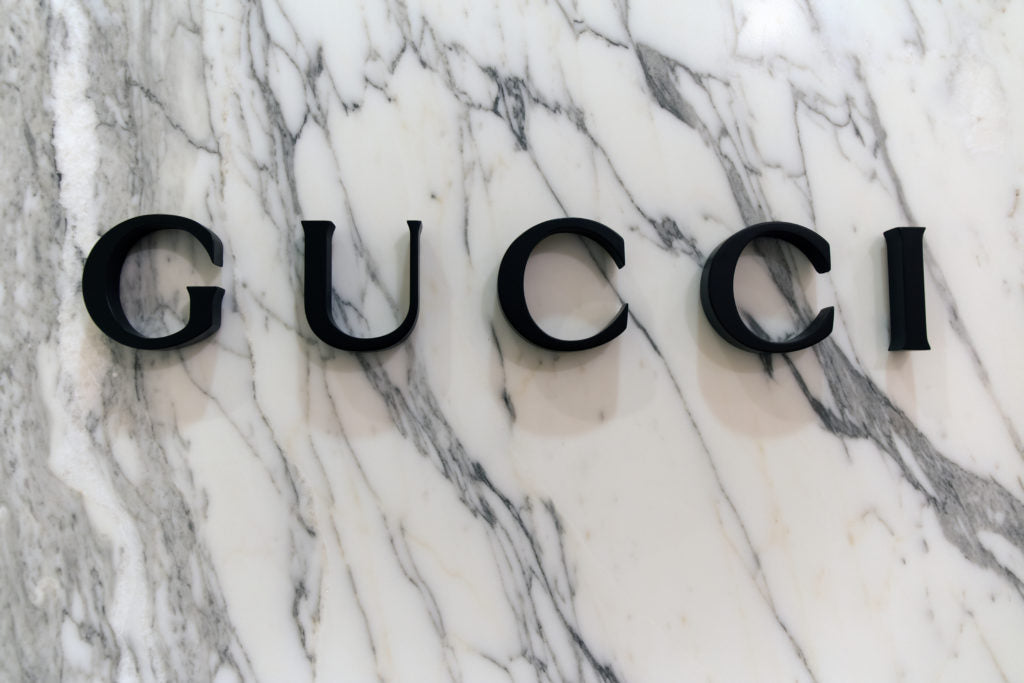A household name, a must-have in every True Fashionista collection, it’s the Italian brand Gucci. When asked to quickly name a designer, there’s a good chance that Gucci will be at the top of the list. It’s easy to see how this classy, well-known line has consistently stayed on top, as its been around for well over a century. Ever since Guccio Gucci opened his first stores in Florence in 1921, the name Gucci has been associated in one way or another with quality and fashion.
Coming on board with his suitcase line in 1935, Gucci had to get resourceful due to a leather shortage from a League of Nations embargo against Italy, creating luggage made from hemp featuring his first signature print – a series of small, interconnecting diamonds in dark brown on a tan background. Doing so, Guccio established himself and his family as a go-to in quality-crafted goods. In 1938, he opened his first store in Rome and after World War II, leather goods production resumed. Son Aldo also introduced pigskin to the line, which quickly became a signature house material. The first of Gucci’s iconic bamboo-handled bags are thought to be produced at this time.
The fifties were an important time of growth for Gucci, when son Rudolfo opened the first Milan store, and Aldo brought Gucci to our shores with the opening of the New York store in the Savoy Plaza Hotel in 1953. During this time the green-red-green web design took its place as a signature company look and in 1960 the store moved to Fifth Avenue. In 1961 Jackie Kennedy was seen carrying a Gucci bag, thereby sparking its renaming as the Jackie.
In the early seventies, the Gucci brand extended beyond travel goods and accessories when a store dedicated to clothing opened in New York and the first fragrance launched. The eighties welcomed Gucci to the runway at Florentine fashion shows, and the trademark Gucci loafer reached new heights as a permanent part of the Metropolitan Museum of Art collection in New York. It was also a time that saw a takeover of the brand by an investment corporation and Gucci overkill ensued.
Further darkening this period in Gucci history was the horrific murder of Maurizio Gucci, grandson of Guccio, via a hitman hired by Maurizio’s ex-wife Patrizia Reggiani, no less. It’s the tale of one of Italy’s first celebrity power couples, and the stuff of Hollywood movie lore. They enjoyed the high society life, then he left her for his mistress, and she had him murdered. Two years later Reggiani and her accomplices were found guilty of the crime, spending many years in prison as a result.
Designer Tom Ford came on board in the mid-nineties as creative director, and his initial collection focusing on jet-set glamour became a commercial success, redefining the label as a fashion mainstay.
Since then Gucci has continued to design product in virtually every corner of fashion, from eyewear and fragrances to footwear and the 2009 reinvented Jackie bag. One can find a Gucci store pretty much all over the world, and has recently developed Gucci Playground, the first iPad app dedicated to children’s wear.
From humble beginnings in Italy to a True Fashionista worldwide presence, Gucci is here to stay. Gucci guilty, indeed!
The post HISTORY OF GUCCI – THE MAN, THE LINE, THE LEGEND appeared first on True Fashionistas.





























